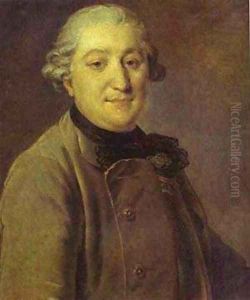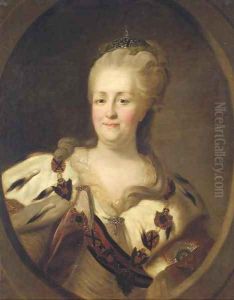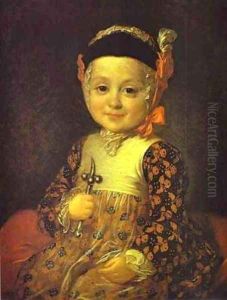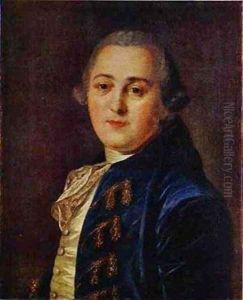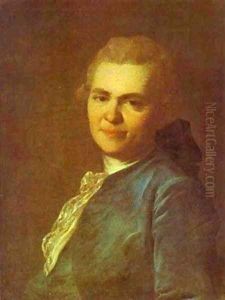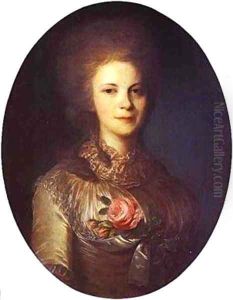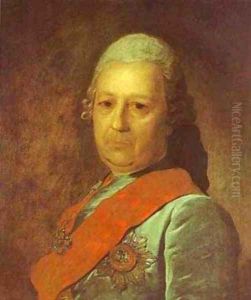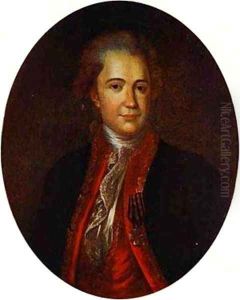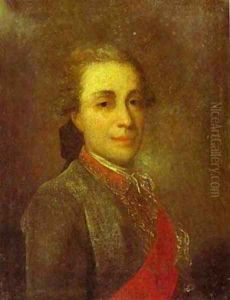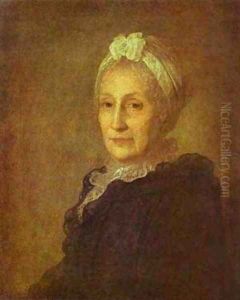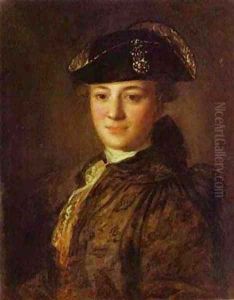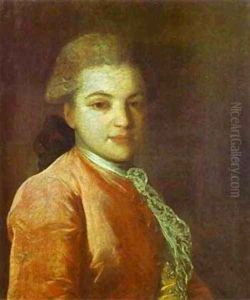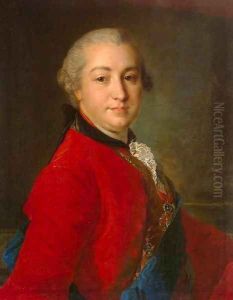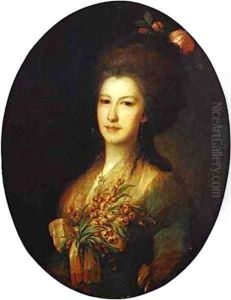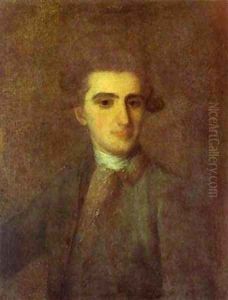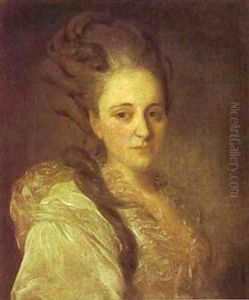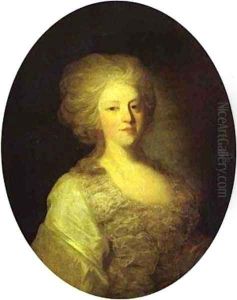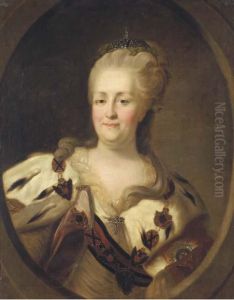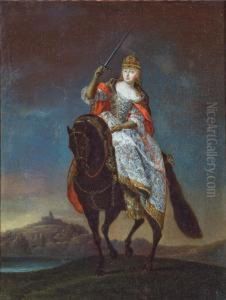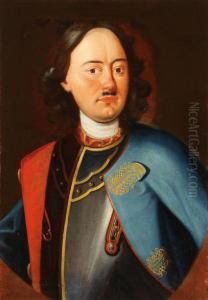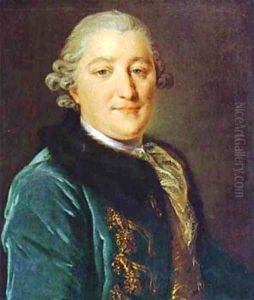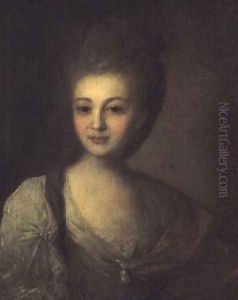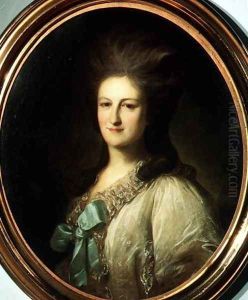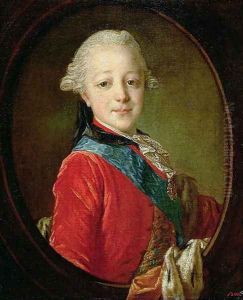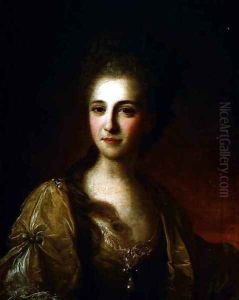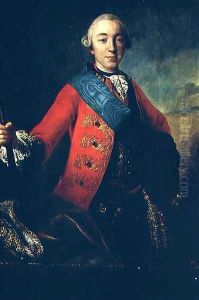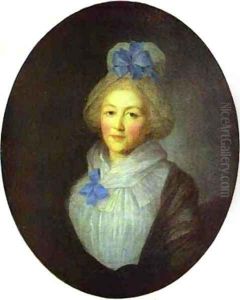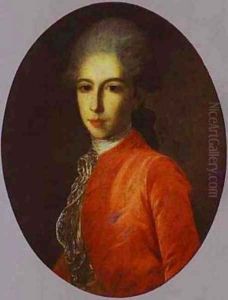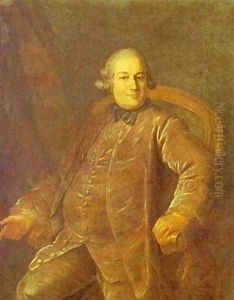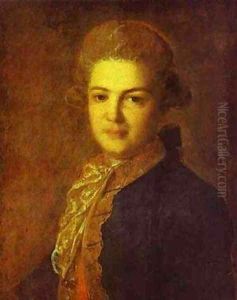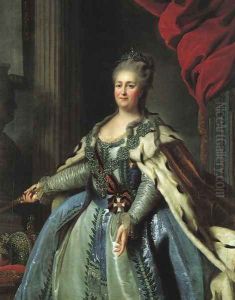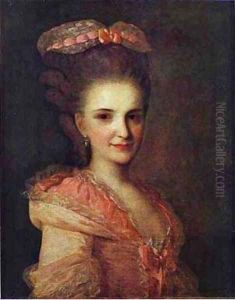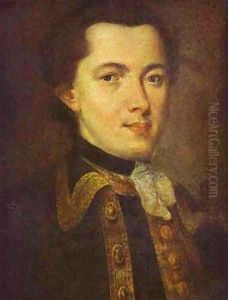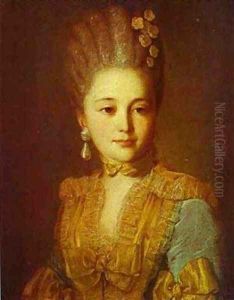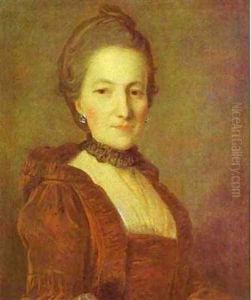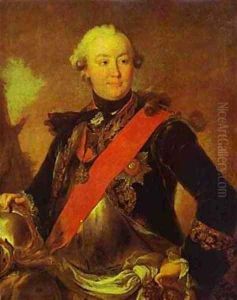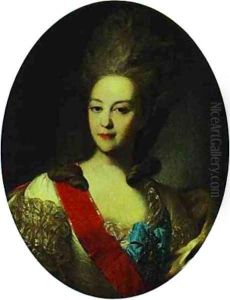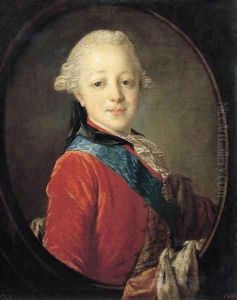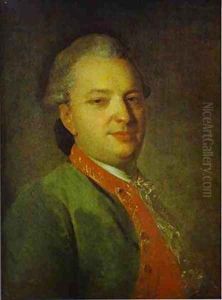Fedor Rokotov Paintings
Fyodor Stepanovich Rokotov was a distinguished Russian painter who is considered one of the greatest portrait artists of the 18th century in Russia. He was born in 1736, although there is some uncertainty regarding his exact birthplace, with some sources suggesting Moscow while others propose that he was born in a small town. Rokotov's family background is also somewhat obscure, but it is known that he was connected to the Russian nobility, which played a significant role in his artistic career.
Rokotov's early life and training are not well documented, but it is believed that he received his initial artistic education in Moscow. He later became a part of the Imperial Academy of Arts in St. Petersburg, which was a major center for the arts in Russia during the 18th century. His work at the Academy allowed him to study under the guidance of established artists and to be exposed to the European artistic trends of the time.
In the 1760s, Rokotov's talent began to gain recognition. He became known for his refined and elegant portrait work, which combined elements of Rococo style with a distinctive understanding of his subjects' personalities. His portraits went beyond mere likeness; they captured the psychological depth and the social status of the individuals he painted.
One of Rokotov's most famous works is the portrait of Empress Catherine II, which solidified his reputation as a master portraitist. His ability to depict the Empress with a blend of majesty and personal charm exemplifies his skill in balancing official representation with individual characterization.
Throughout his career, Rokotov painted many of the Russian elite, including nobles, cultural figures, and members of the royal family. His work is characterized by its exquisite detail, sensitive use of color, and the subtle rendering of textures in fabrics and jewels that adorned his subjects.
Rokotov's legacy rests on the remarkable collection of portraits that offer a window into the faces and fashions of 18th-century Russian high society. He died in 1808, leaving behind a body of work that continues to be celebrated for its artistry and its historical value. Despite the fact that Rokotov's portraits are often overshadowed by the grand historical narratives of the era, they remain an integral part of Russia's cultural heritage, reflecting the sophistication and the nuanced social dynamics of his time.
